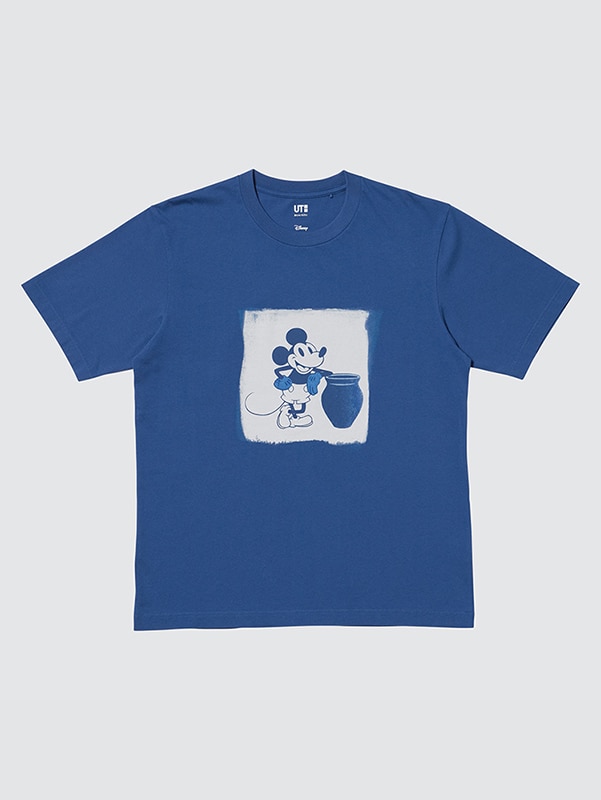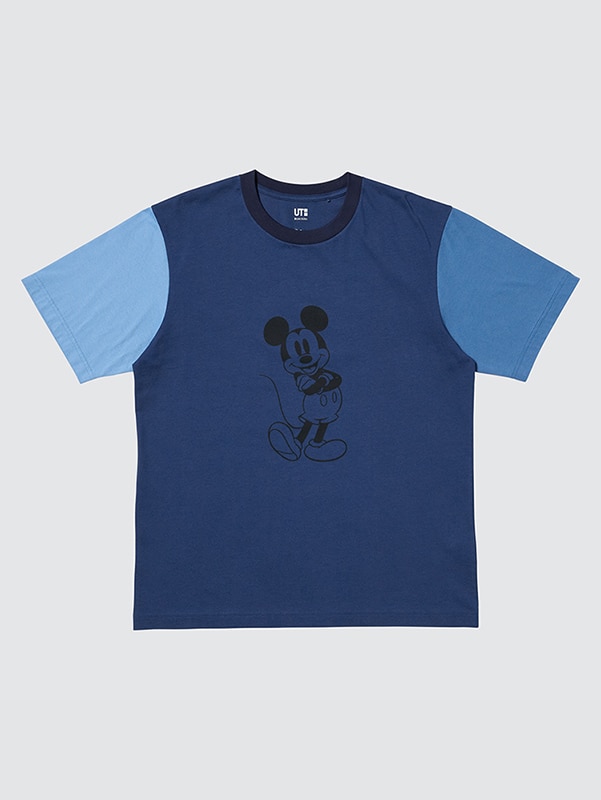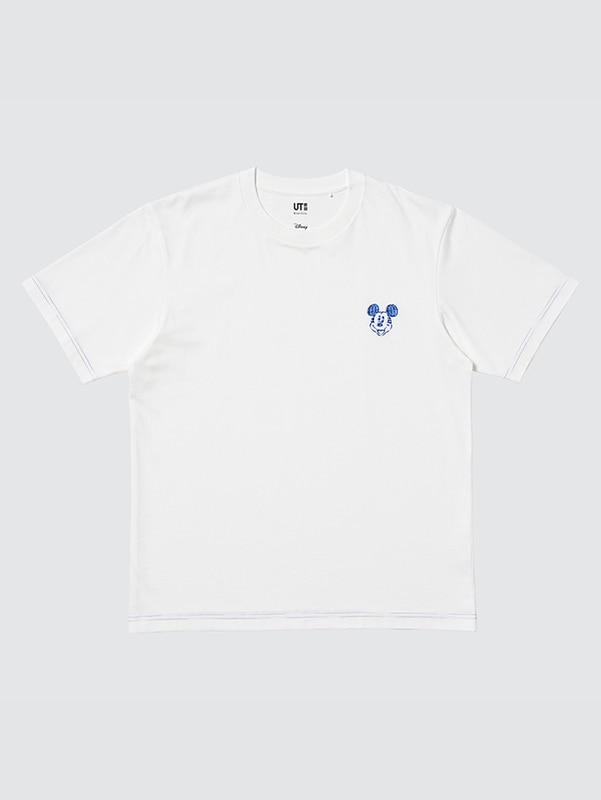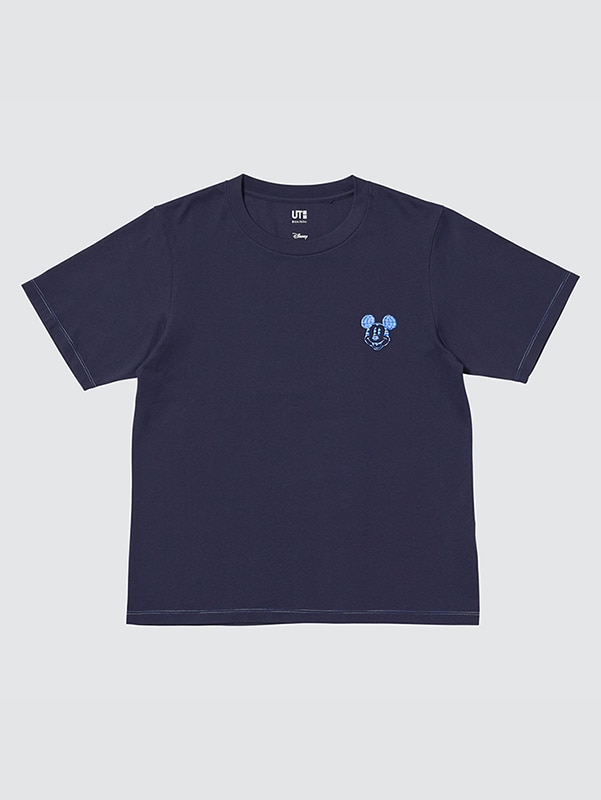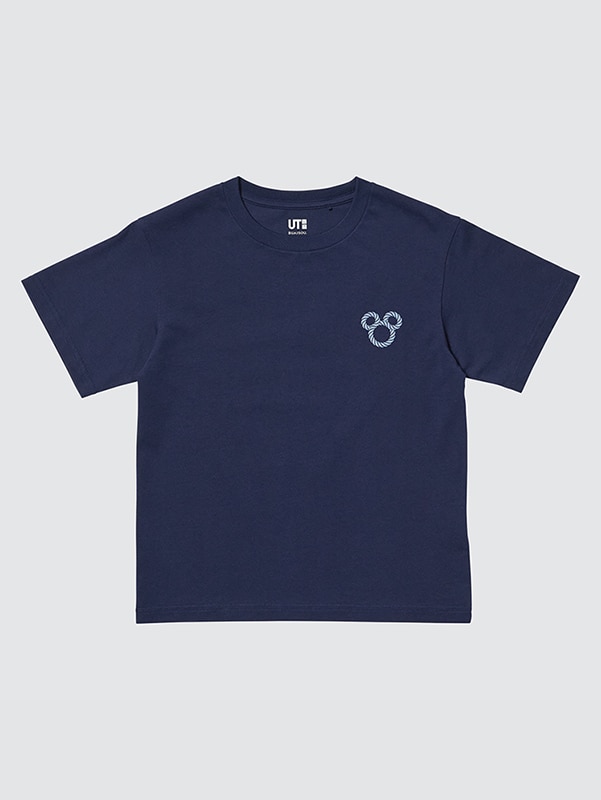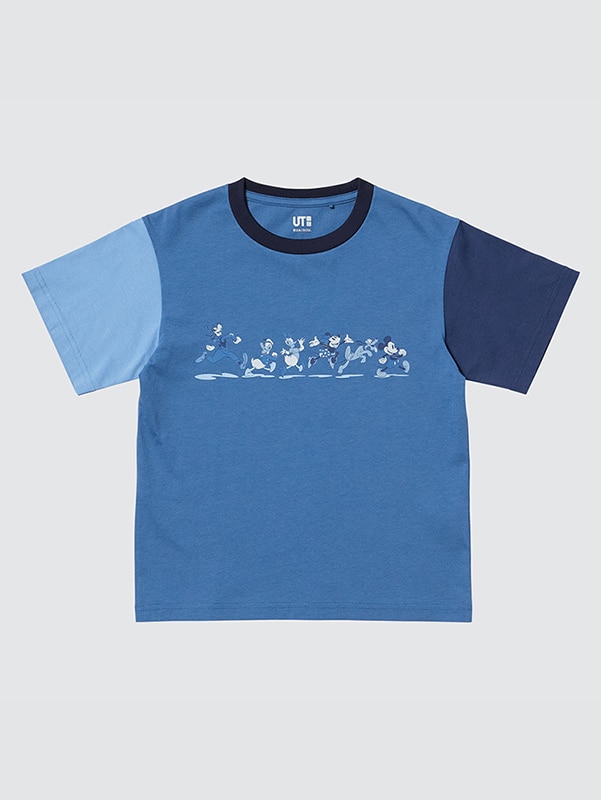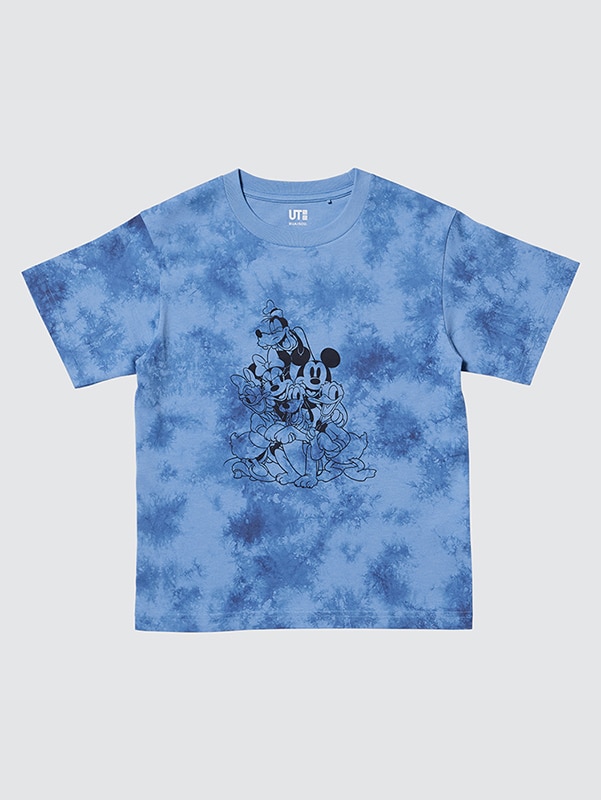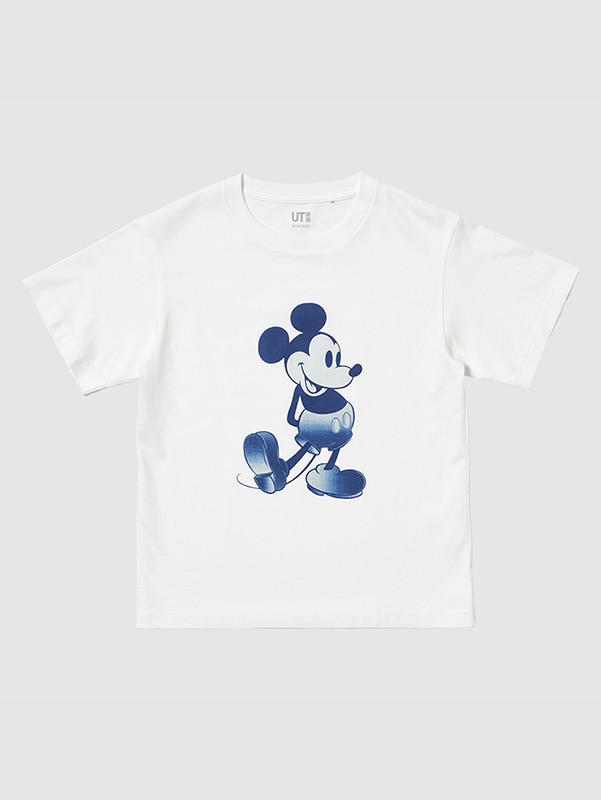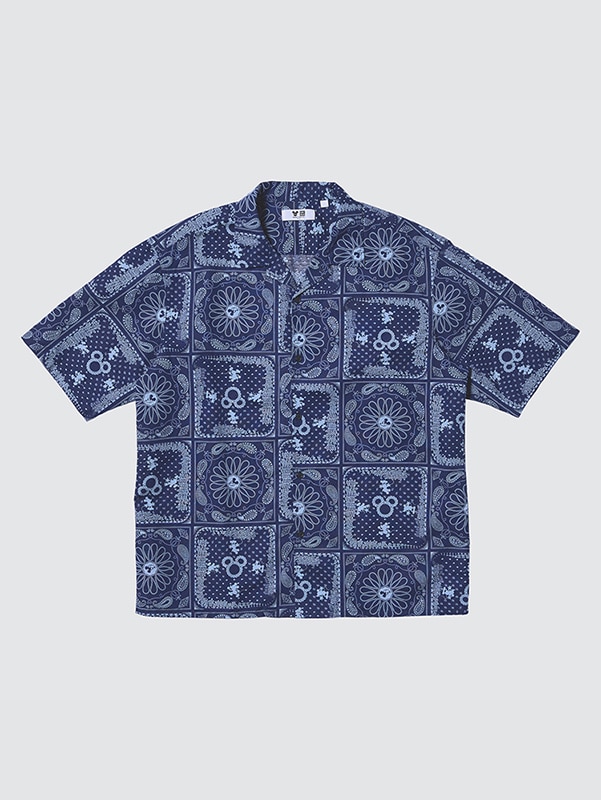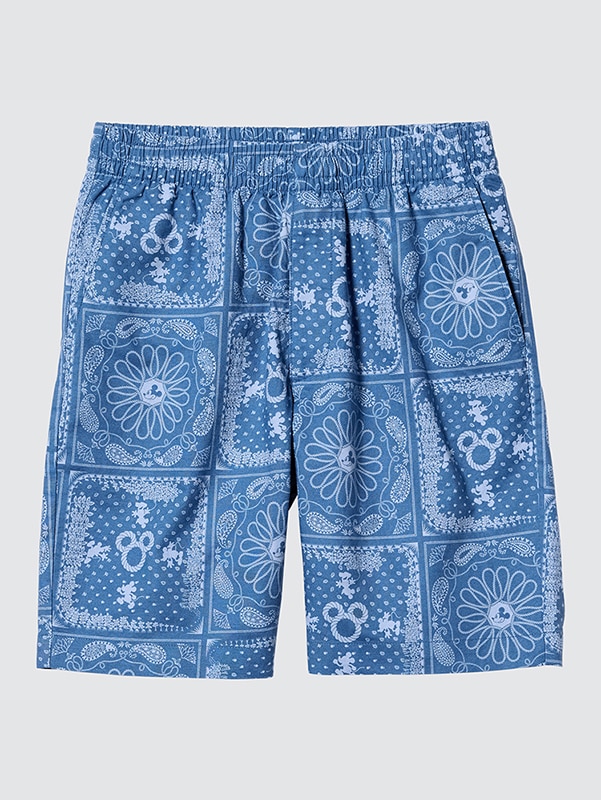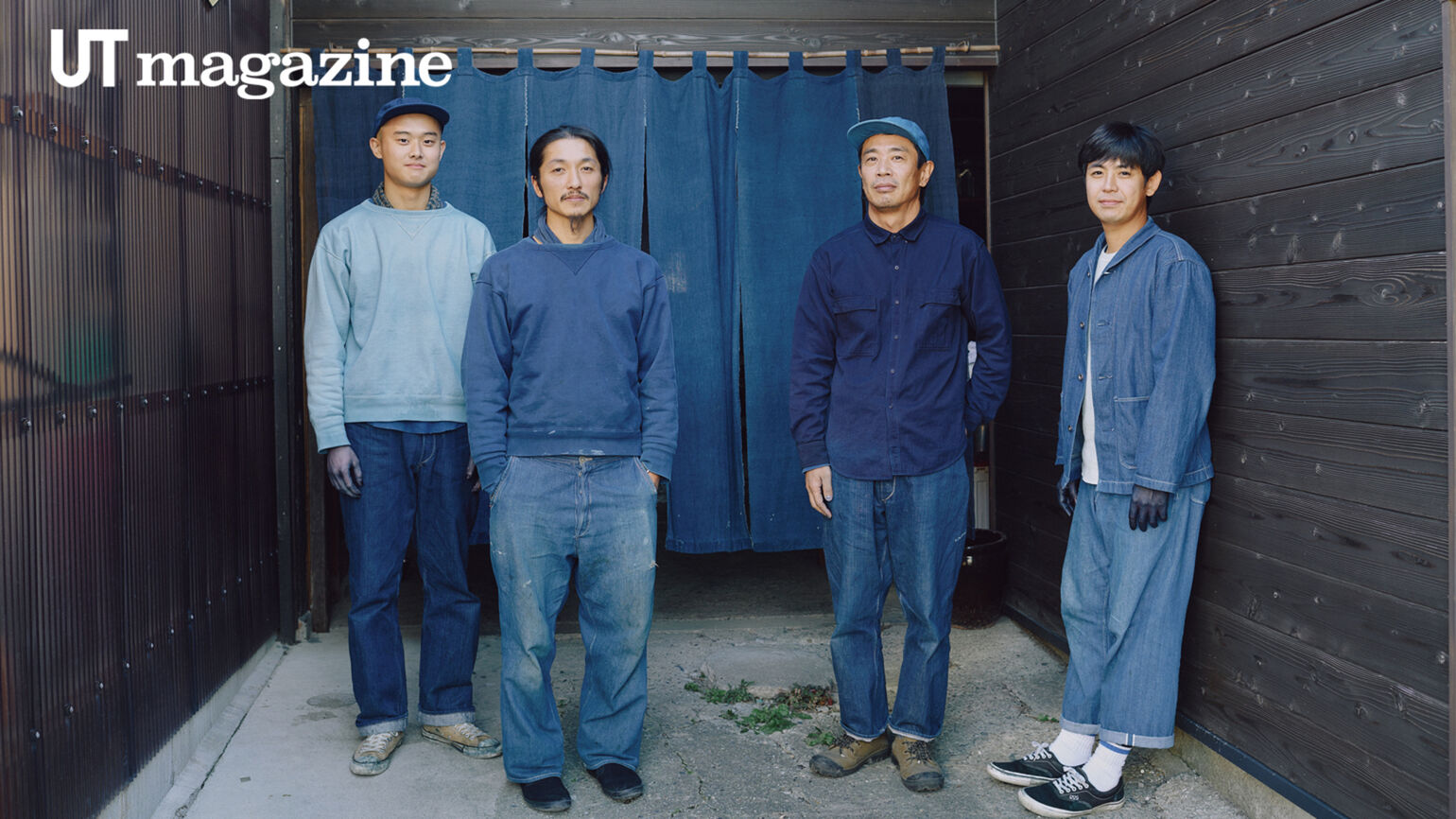
Indigo Artistry Meets Disney’s Mickey Mouse: A Collaboration by BUAISOU
View items
The Elegance of Pursuing Single Shade in Indigo
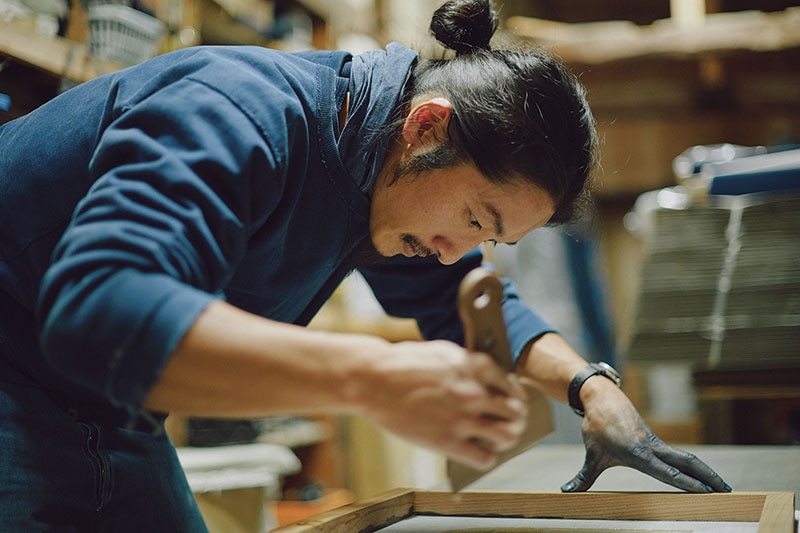
Indigo dyeing is a natural dyeing tradition found across the world. The process begins with growing and harvesting indigo plants, fermented to create sukumo. In Japan, traditionally the two roles were divided: the “aishi,” who create the sukumo, and the “someshi,” who prepare the indigo vat and perform the dyeing. However, “BUAISOU” based in Kamiita, Tokushima Prefecture handles the entire process from start to finish on their own. Kakuo Kaji, one of the founders and the representative of BUAISOU, discovered his passion for indigo while studying textile design at Tokyo Zokei University. His interest stemmed from the unique agricultural aspect of indigo production–growing and harvesting plants specifically for dye-making, and a personal love for the color blue. “Most plant dyeing methods involve collecting the dye plants in the mountains and boiling them to create the dye, but indigo is the only method in which the plants are cultivated from seed, harvested, and used to make the dye.”
“The indigo maker who makes indigo and the indigo dyer who dyes indigo are two separate craftsmen. The idea of dedicating oneself to creating just one color fascinated me,” he explains.“I once saw a photograph of an indigo craftsman working barehanded in a freezing river to wash yarn during the winter. The contrast between the snow and the deep indigo was strikingly beautiful, and I was deeply moved by the dedication it represented.”
Driven by a desire to experience indigo at its source, Kaji joined a local revitalization project in Tokushima, despite initially knowing little about the craft.
“In Tokushima, indigo dyeing feels like a natural part of life, not something extraordinary. It’s so ingrained in the culture that people don’t even think of it as ‘natural dyeing’. That was eye-opening for me, coming from a place where this kind of tradition doesn’t exist. In Aomori, where I’m from and even in Tokyo, there are many who don’t know about plant dyeing. I feel envious of those born in Tokushima, who must have grown up with indigo all around them.”
Despite his previous experience with plant-based dyeing, Kaji quickly realized how demanding indigo production was. “I initially thought I could learn the process and eventually do it on my own. But after experiencing everything, from farming to making sukumo, dyeing, designing, sewing, and creating products, I realized one person couldn’t handle it all. The traditional division of labor exists for a reason.” Determined to create a fully integrated approach, Kaji teamed up with like-minded individuals he met through the revitalization project to form BUAISOU. While they considered other locations, they ultimately chose Tokushima for its rich soil, climate, and the fact that launching it in the birthplace of indigo would fuel their motivation.
The Pursuit of Quality:
BUAISOU’s Journey in Crafting and Dyeing
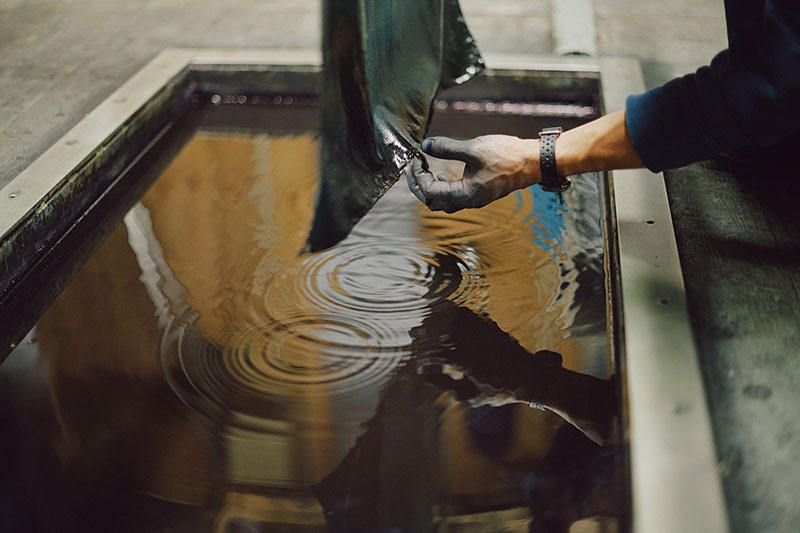
“When we started, everyone around us said it was impossible. Even indigo-dyeing artisans advised us to source the dye and focus on dyeing rather than making it myself. That advice fueled our determination. Being young, we thought,‘Why not? We can absolutely do this.’ So, we set our first goal: to create high-quality sukumo and achieve beautiful dyeing results, just like professional indigo artisans. Whether we’ve truly reached that level now is hard to say, but we’ve achieved our primary goal of self-sufficiency. At this point, we focus on refining our precision.”
Indigo dyeing is often seen through the lens of traditional craft, but BUAISOU has approached it from different perspectives, such as art and fashion, challenging conventional ideas. So how did this relatively young BUAISOU gain recognition overseas? “We started with the vision of creating products for younger generations and audiences overseas. If we had grown up in Tokushima, we might have felt constrained by the traditional framework of the craft. But as outsiders, we were free to chart our course,” they reflect. Initially met with skepticism, they forged ahead, and a pivotal moment arrived when they met their manager, Kyoko Nishimoto. Recognizing the brilliance of BUAISOU’s work, Nishimoto encouraged its global reach and organized workshops in New York. This connection led to the establishment of a base in New York alongside their Japanese headquartersーa major milestone that boosted international recognition. Soon after, they began receiving workshop requests from other cities.
“Though we’re often categorized as traditional craftspeople abroad, that’s not our intention. We’re using Japanese indigo-dyeing techniques to make modern, relevant pieces. This blend of traditional methods with contemporary needs has likely contributed to our global appeal.”
Committed to Organic Methods and Striving Beyond Traditional Crafts
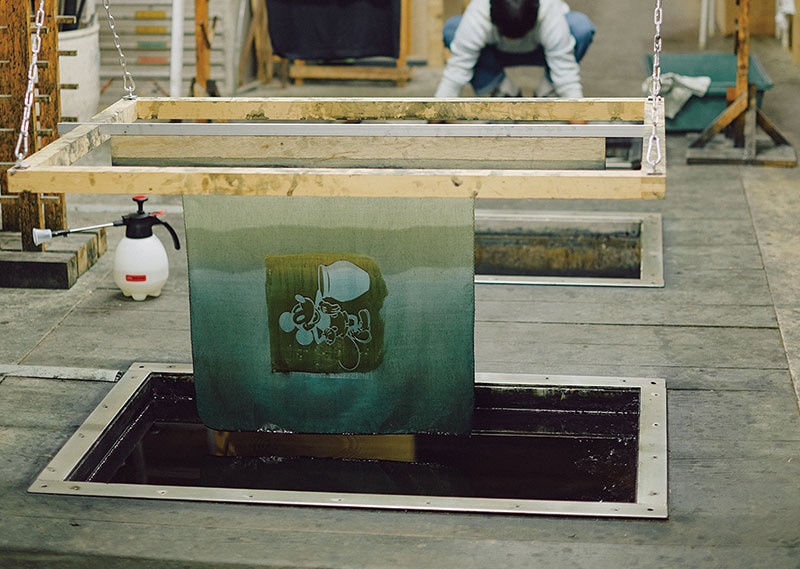
From cultivating soil to growing and harvesting indigo plants, creating sukumo, dyeing, and sewing...everything is done by themselves. The most critical aspect is weeding during the growth and harvest of the indigo plants. This affects the harvest yield, determines the annual dye supply, and ultimately impacts their work. Even in farming, BUAISOU’s meticulousness shines”.
“We aim to surpass the standards of traditional craft. For instance, most sukumo used in contemporary traditional crafts is produced with chemical fertilizers, pesticides, and insecticides, following contemporary farming practices. While we don’t deny this approach, we began questioning what true traditional craftsmanship means. That's why we’ve chosen organic methods, shifting from animal-based to plant-based fertilizers. What matters most is being able to explain how we create our colors. If we were just chasing beautiful colors, we would have hit a dead end. Any color can be deemed beautiful on its own, it is the context of its creation and how it interacts with other colors that defines its value. For us, the process behind the color is crucial. Colors created with shortcuts or chemicals lack appeal. Ultimately, what we’re pursuing isn’t just color but the essence of creating color itself. It’s an ephemeral beauty without substance or weight, just color. Its pursuit may be purely self-indulgent, but it reflects the extent of our dedication, and we hope to convey that.” BUAISOU’s materials may seem more traditional than those of the past, but their work isn’t solely nostalgic.
“Our sukumo production uses wheat bran as a nutrient source for the fermentation, combined with oyster shell ash, wood ash, and the sukumo itself. This creates indigo dye without the need for additional chemicals. However, for dyeing, we use stainless steel tanks, allowing us to dye larger and wider fabrics. In the past, only ceramic vats were used, and this limited the size of the fabric that could be dyed. In our atelier, we can dye pieces that are up to three meters in length at once. Modern tools also enable us to achieve precise horizontal gradients and other effects. We often incorporate new tools to push the boundaries of new possibilities.”
Expressing Mickey Mouse through Indigo Dye
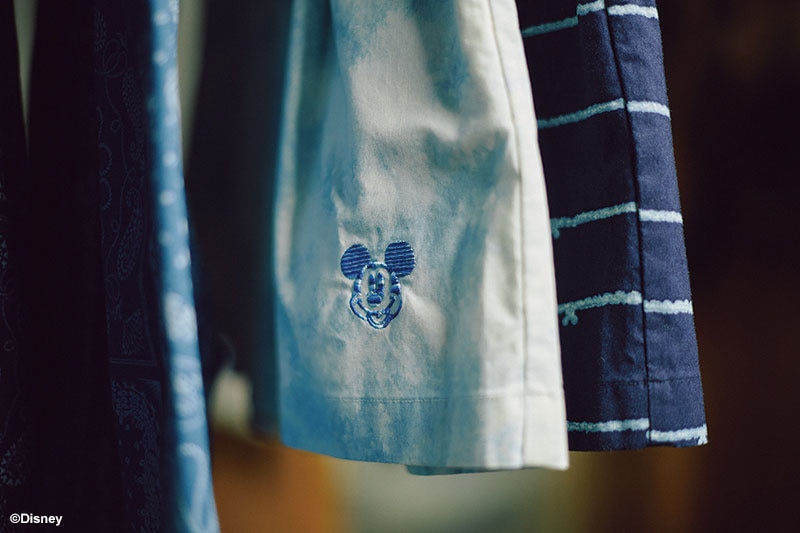
Through workshops and collaborations, BUAISOU has shared their indigo dyeing with the world. Their collaboration with MAGIC FOR ALL collection featuring Mickey Mouse, a globally beloved icon recreated through BUAISOU’s indigo dyeing artwork.
“We started by exploring the meaning of portraying Mickey Mouse with indigo dye and how to connect the two. This led us to research the history of Mickey Mouse, such as comparing the timeline when natural indigo shifted to synthetic dyes to the era of Mickey Mouse’s creation. Additionally, we thoroughly examined potential links to indigo, including the fashion of the time when Mickey Mouse was created. The first Mickey Mouse animation featured a steamboat, which felt tied to BUAISOU’s rope motif, symbolizing the sea and the skyーboth blue. These elements came together to build the story. Without the theme of Mickey Mouse, we might never have thought this way, so it was an enjoyable process. We explored the best indigo dyeing techniques to depict various Mickey Mouse motifs and were thrilled to see them translated into prints.” One design features Mickey Mouse with blue hands, a nod to the dye-stained hands of indigo artisans. Another incorporates the brand’s iconic rope motif into a bandana pattern, depicting the indigo dyeing process from fermentation to application, reimagining Mickey Mouse as an indigo artisan.
The main theme of this collaboration is for people who love “Mickey Mouse to purchase these products and feel the essence of indigo. Typically, we strive for flawless results in our work, however this time, we embraced the appeal of handwork. If we had simply depicted a pristine Mickey Mouse, it would’ve been another blue Mickey Mouse print. Instead, we infused meaning into the process. We hope this collaboration introduces more Disney fans worldwide to the beauty of Japanese indigo.”
The Making of BUAISOU’s Indigo Dye Material, Sukumo
When dyeing with indigo, the leaves of a plant called Tade-ai are dried, then fermented and aged to create Sukumo, a compost-like material used as the dye. Cultivating Tade-ai is an incredibly demanding agricultural task for indigo artisans, and it plays a crucial role in producing the materials needed for the year’s indigo dyeing.
Note: Methods may vary among artisans.
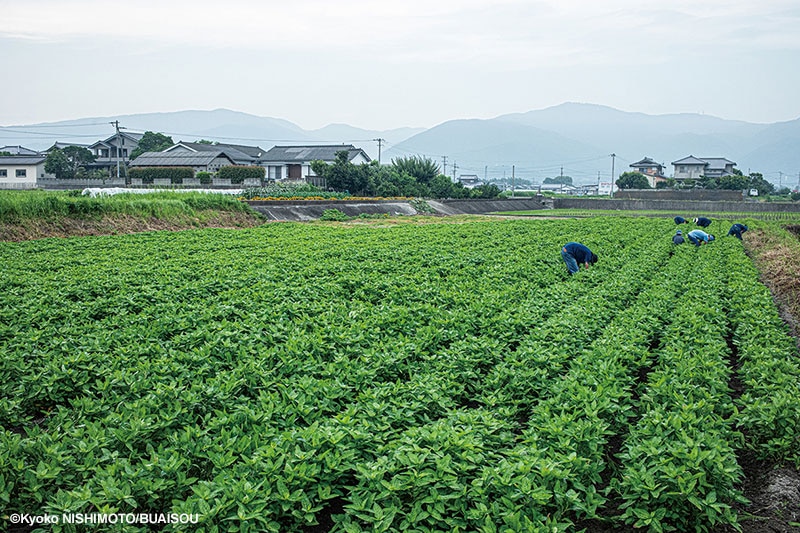
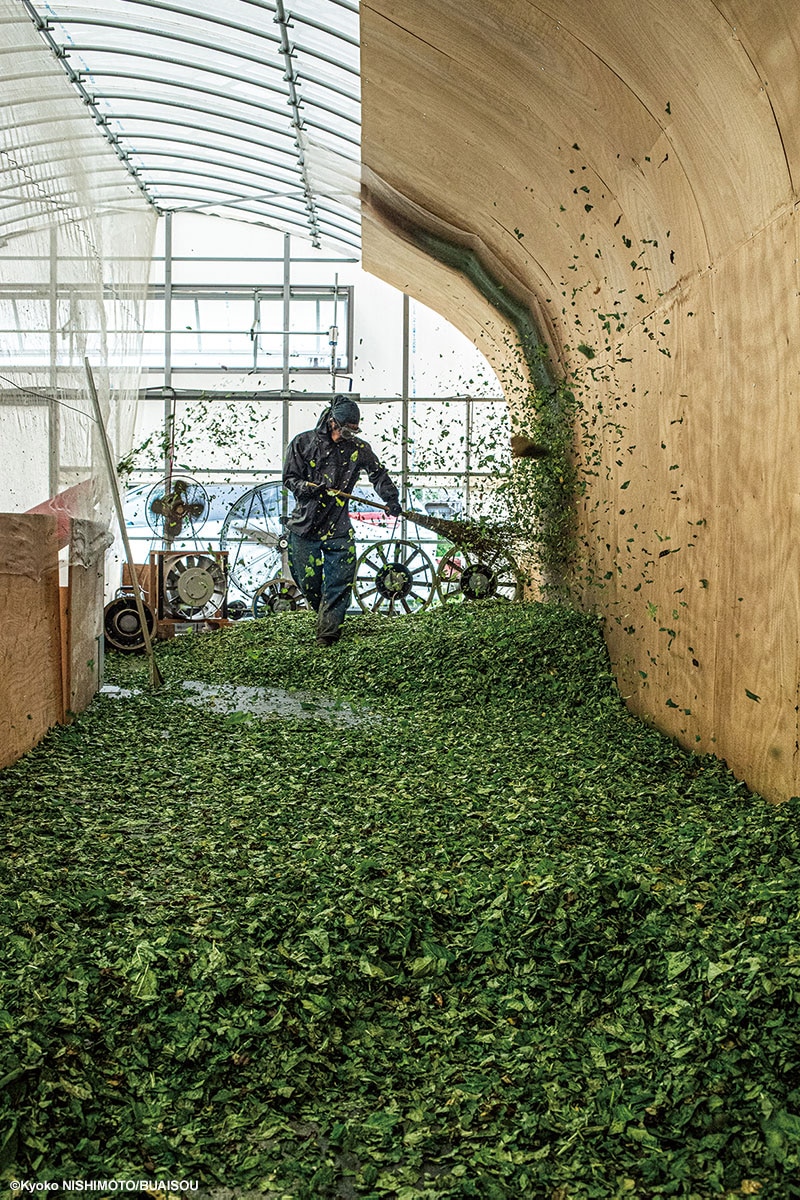
Farm work is carried out throughout the year. In winter, the soil is prepared, followed by planting seeds in spring and nurturing the seedlings. From April to June, weeding and watering take place.
During the harvest season from July to September, the indigo is sorted into leaves and stems (a process called konashi), then dried and the cutting process is repeated for the second and third harvests. From October to February, the indigo ferments in a space called a bed(nedoko). Every seven days, water is applied to keep the plants moist while the pile is broken down and rebuilt to encourage fermentation(kirikaeshi).
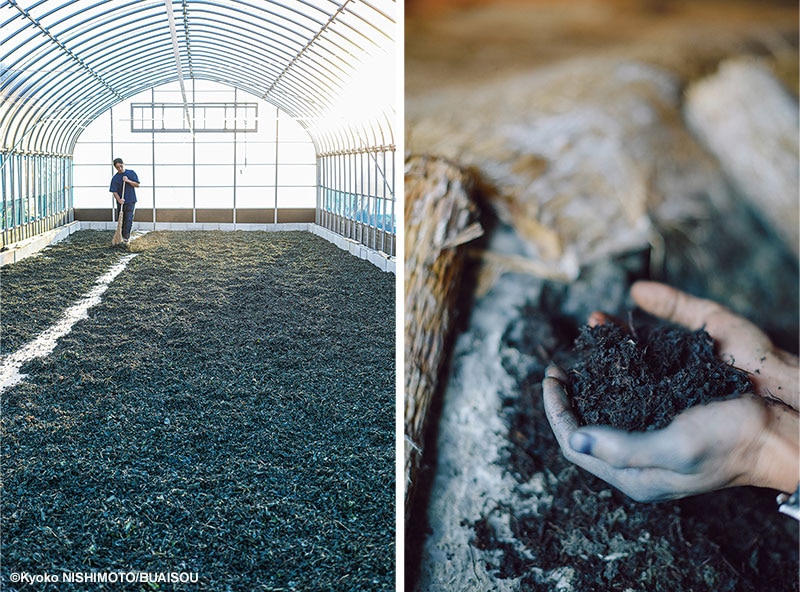
As fermentation progresses, the volume of the leaves reduces to about half, with the internal temperature reaching 60–70°C (140–158°F) due to enzymatic activity.
Each batch of indigo dyeing requires about 32 kg (1.5 piculs) of sukumo. BUAISOU ensures that all materials used in the indigo vat are natural, including sukumo, wheat bran, wood ash lye, and powdered seashell lime. Depending on usage, the indigo vat remains usable for about 4–6 months.
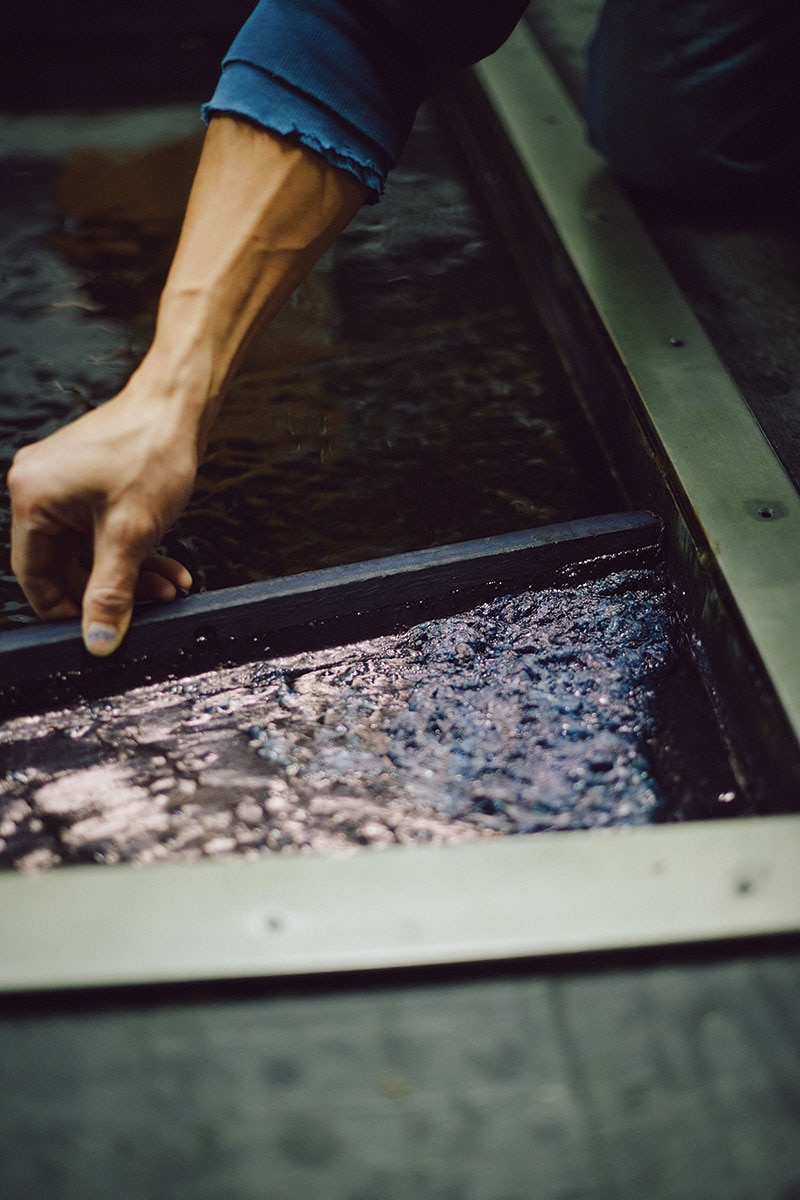
BUAISOU’s Indigo Dyeing Technique Recreated on T-Shirt Prints
How did BUAISOU express the original design, which became the basis for the print, through indigo dyeing? Here, we introduce the techniques and processes involved in indigo dyeing.Note: Techniques may vary depending on the dyer.
【Katazome (Stencil Dyeing)】
Using design data, stencils are hand-cut and placed on the fabric. A resist paste made from mochi powder and rice bran is applied on the cloth and allowed to dry. The area where the paste is placed remains white without being dyed. To ensure even coloring, the fabric is misted with water before dyeing. The fermentation state of the indigo vat influences the color and coverage, requiring constant adjustments. Gradations are created by carefully controlling the speed, depth, and frequency of immersion in the indigo vat. After dyeing, the fabric is gently washed in lukewarm water without scrubbing, then rinsed twice in water to remove the paste. Since the dye solution is alkaline, the fabric is neutralized by soaking in a vinegar-water solution to fix the color.
It is then washed again, soaked in running water overnight, and left to dry. While dyeing takes just one session, BUAISOU dedicates three days to the post-treatment process.
Finally, the fabric is immersed in a protein-rich gojiru solution (soybean extract) for about 20 minutes to enhance color fastness and durability.
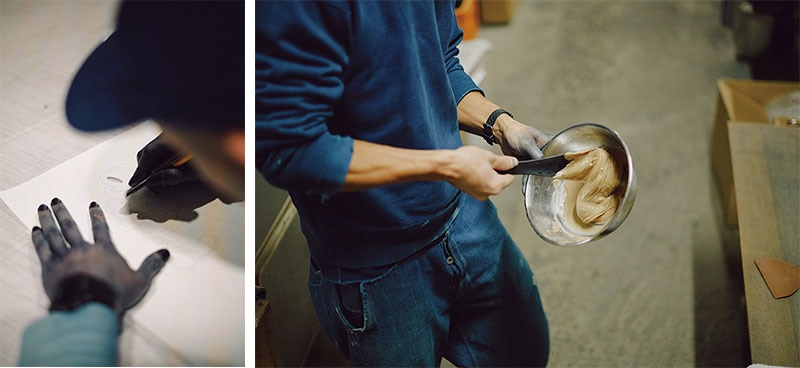
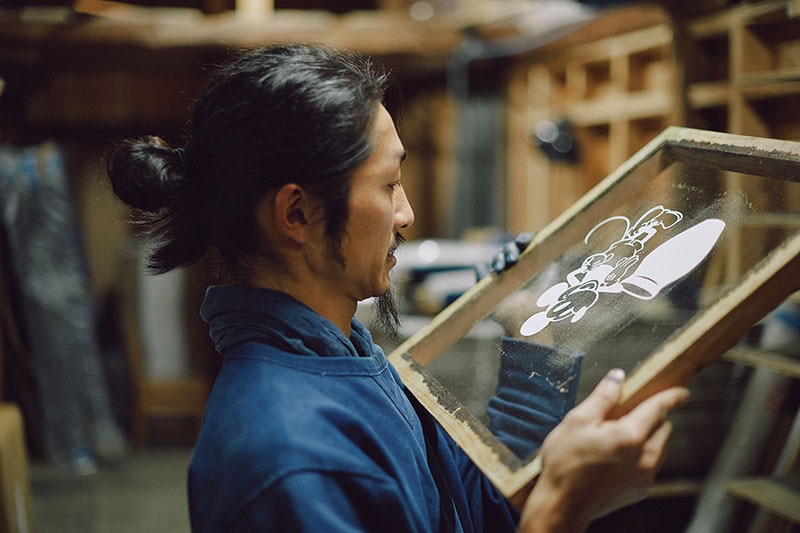
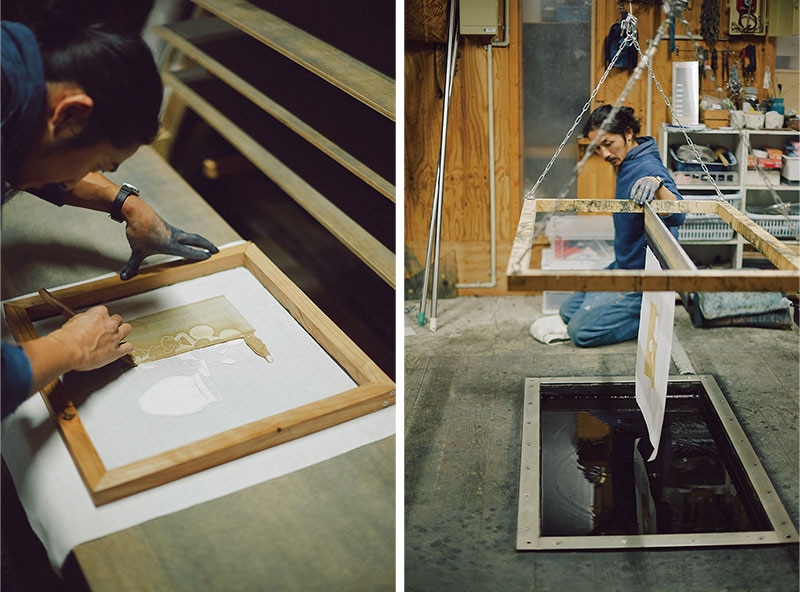
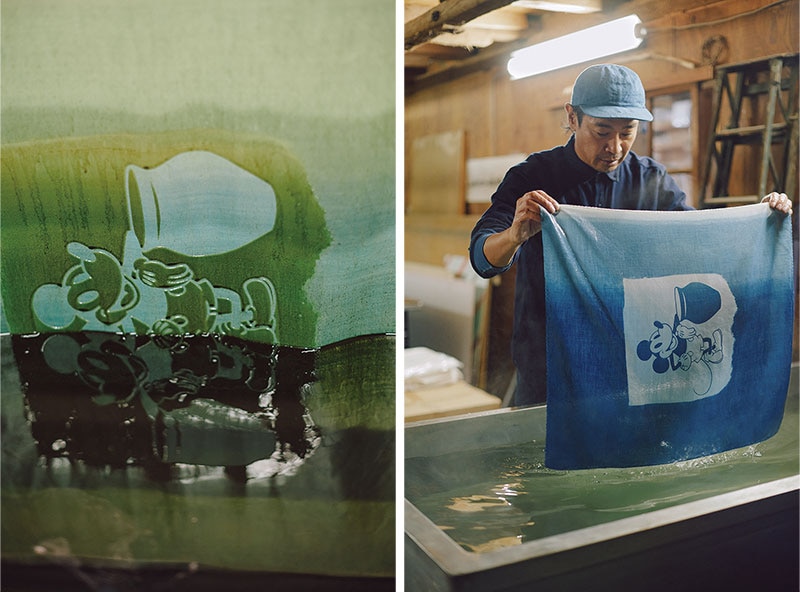
【Bassen (Discharge Dyeing)】
This technique removes color from pre-dyed indigo fabric. Using either silkscreen or stencil, a chlorine-based paste is applied to the fabric in the areas where the color should be removed. After air-drying, the fabric is steamed for about 20 minutes. The strength and the thickness of the paste affect how much color is removed, making balance and precision critical to avoid bleeding. After steaming, the fabric is thoroughly washed to remove the paste. This method allows for intricate patterns and fine designs, such as small text, making it ideal for bandanas and similar items.
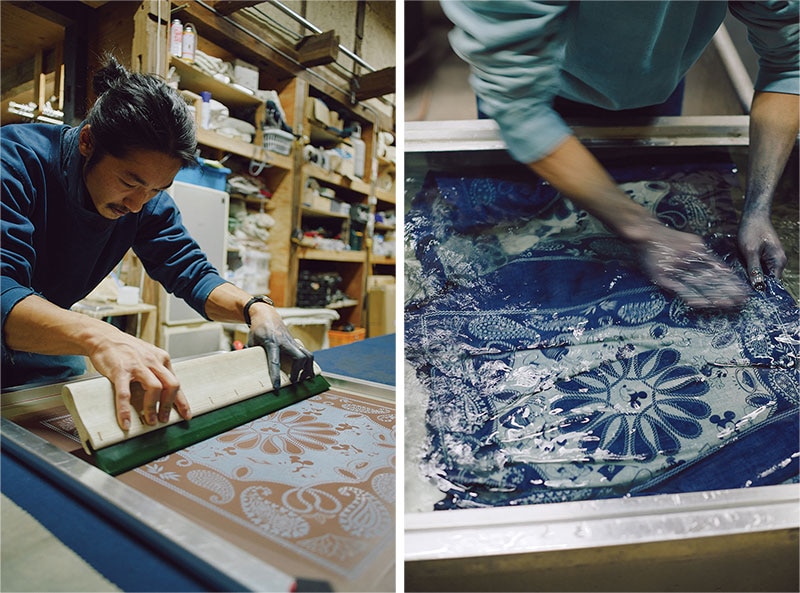
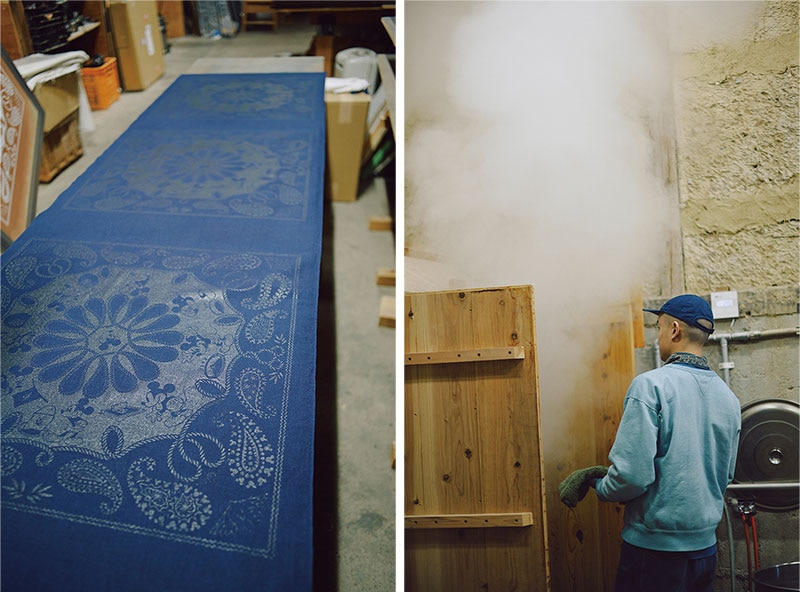
【Shibori (Tie-Dyeing)】
Shibori is a traditional technique practiced worldwide, where fabric is tied, stitched, or bound to create resist patterns. The areas that are bound remain undyed, forming unique patterns. The final appearance varies depending on the tightness of the binding and the way the fabric is handled. For this project, the fabric was gently manipulated and evenly moistened to create intricate, natural-looking patterns resembling capillaries.
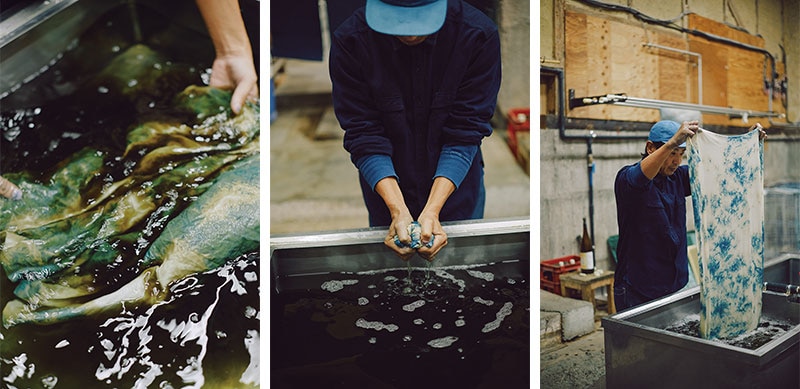
BUAISOU Team’s Favorite Designs
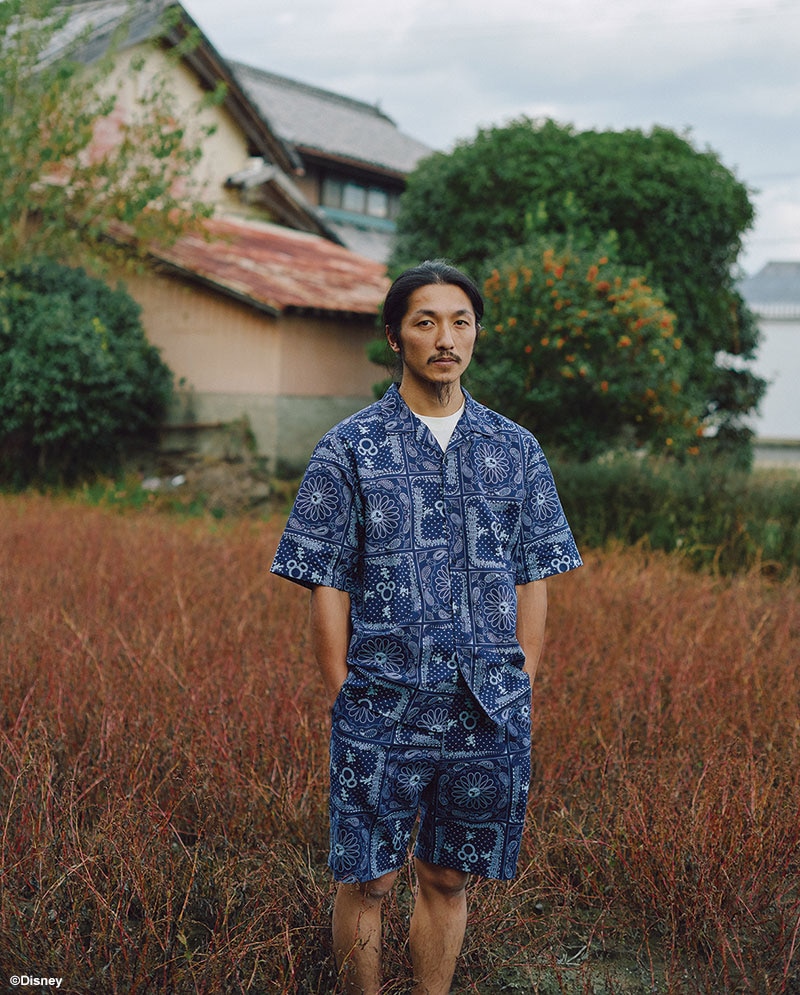
A blend of BUAISOU’s iconic rope motif and Mickey Mouse, printed on cotton linen fabric using discharge dyeing.
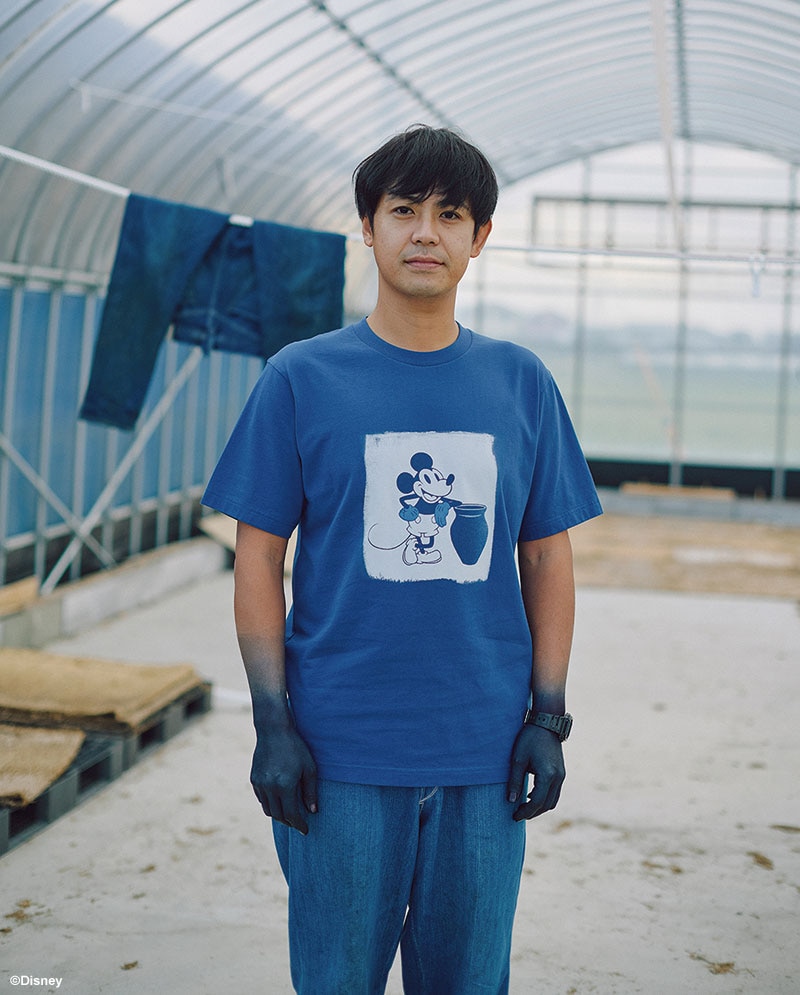
Hand-applied resist paste preserves a natural touch, while details like Mickey Mouse’s blue hands and the delicate gradation of indigo dye in the vat showcase the craftsmanship.
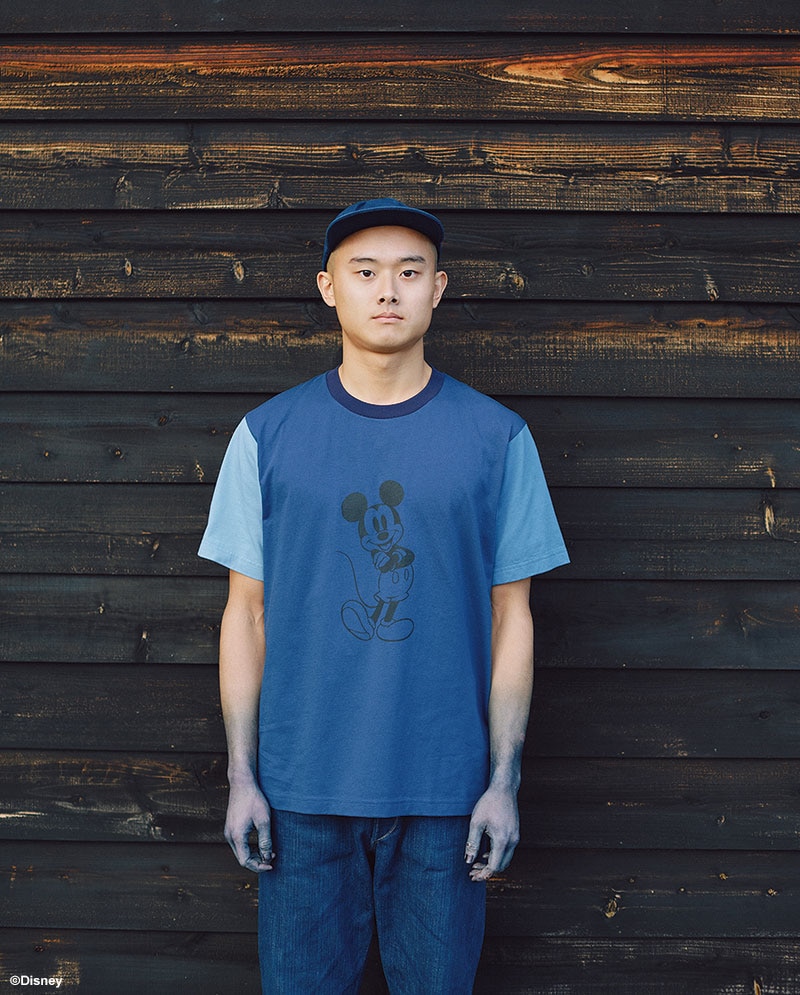
A design that recreates and combines various tones of indigo, achieved through meticulous control of immersion time and frequency during the dyeing process.
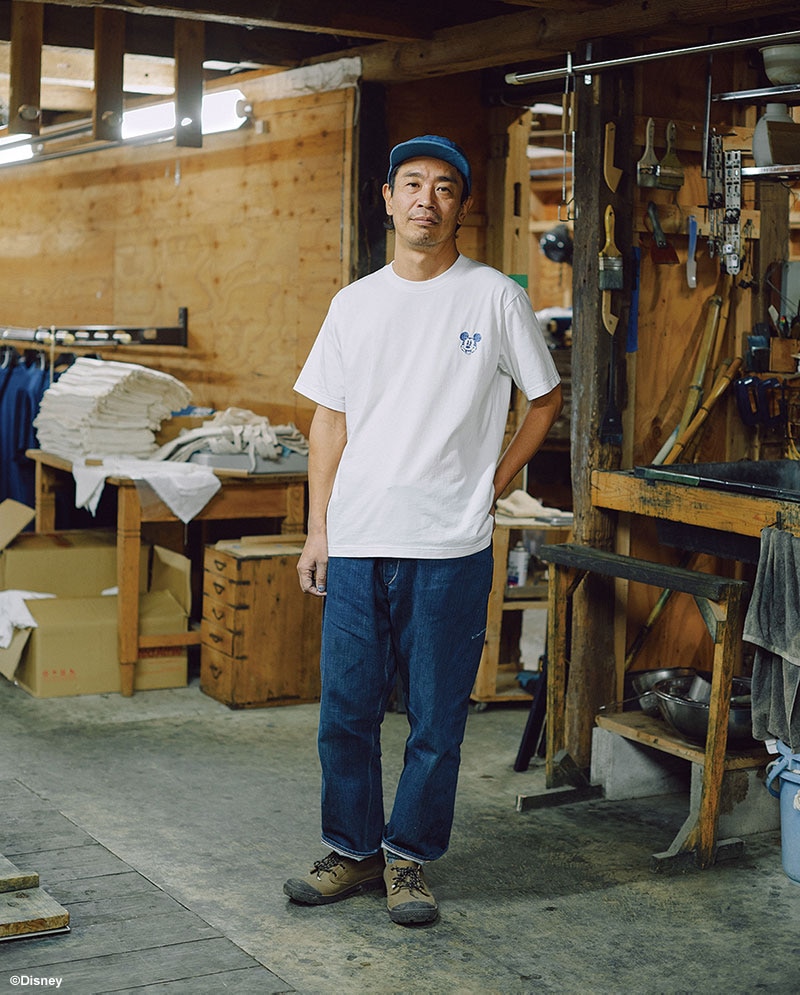
A faithful recreation of hand-dyed indigo thread colors, featuring a small embroidered Mickey Mouse as a subtle yet striking accent.
Tokushima Locals in the Collection
This collection conveys the appeal of indigo to customers around the world by reproducing designs created using various techniques and incorporated into products by UNIQLO under the supervision of BUAISOU. The products use synthetic dyes inspired by natural indigo.
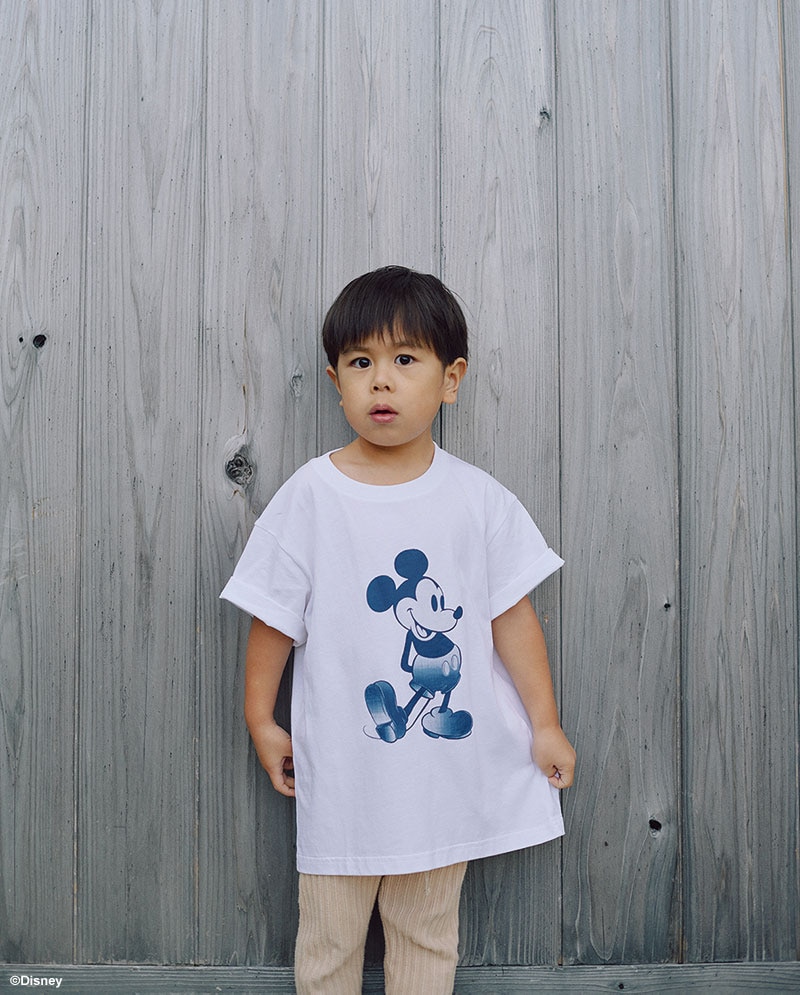
For the pants, the button outline is left unpainted with paste, while the rest of the design is dyed. Since the button outline has a gradient, it’s dyed in four separate sessions. The same technique is applied to the pants and shoes, with the upper and sole having different gradient directions. This required repeating the steps of applying resist paste, dyeing, and washing 11 times, with around four dyeing sessions per round. The repetitive process is focused on creating a unique texture through careful, time-consuming handwork.
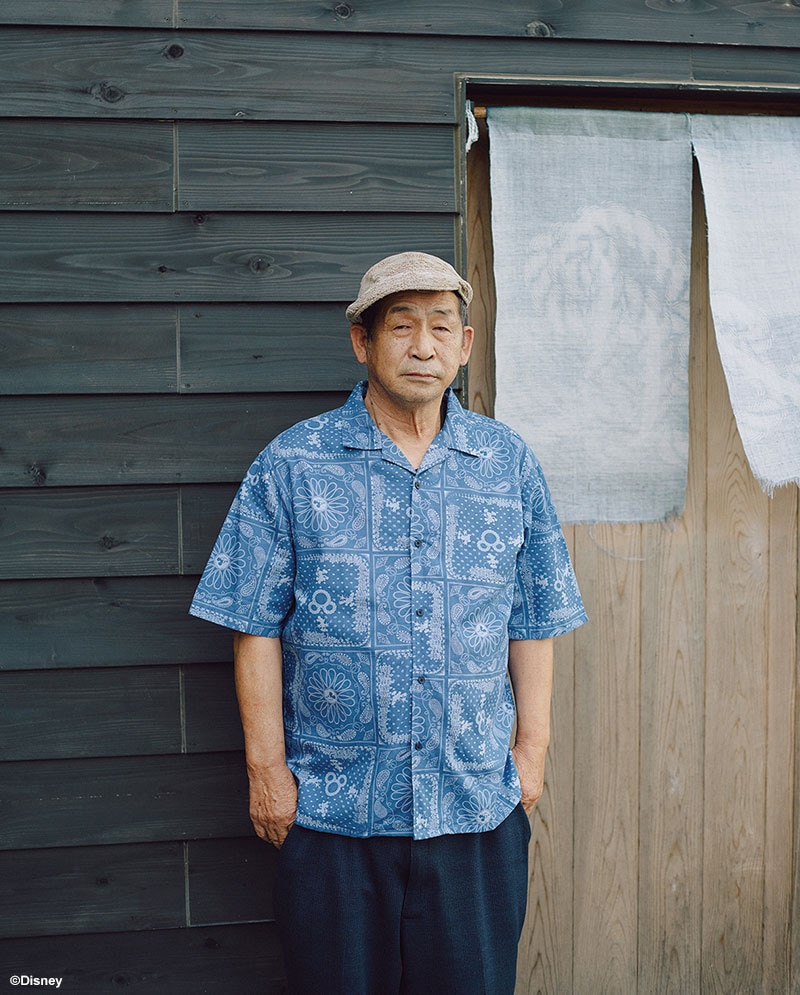
A shirt featuring an all-over print with BUAISOU’s signature bandana pattern, combined with iconic ropes, indigo elds, and Mickey Mouse.
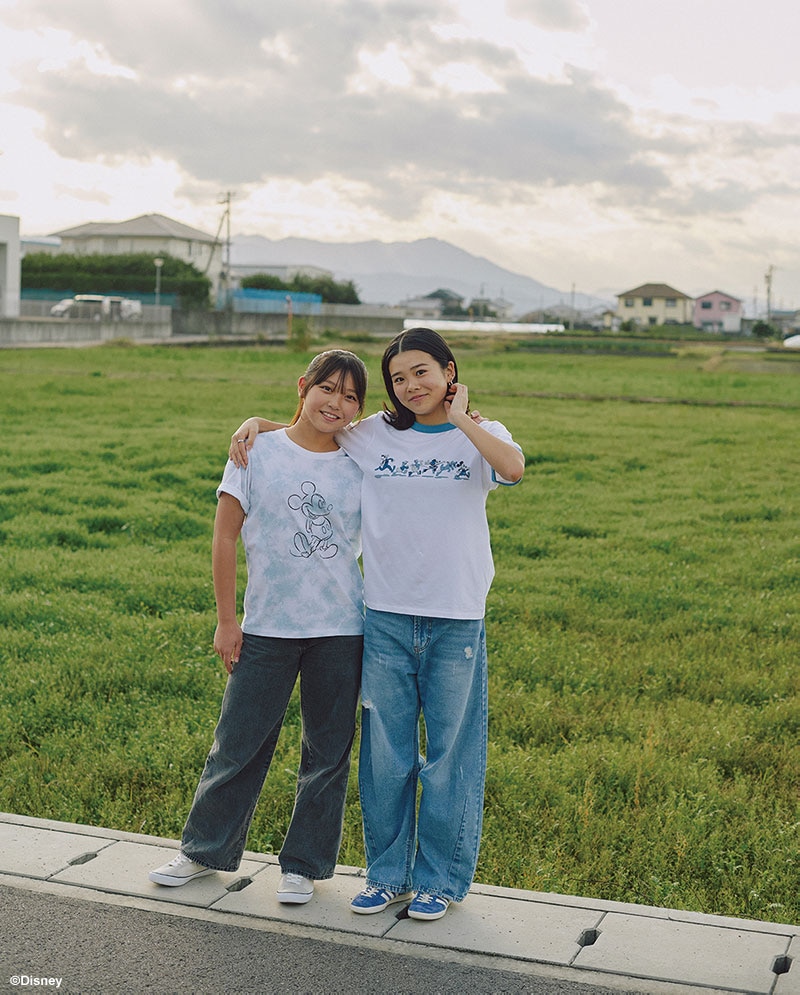
Left: A shibori-dyed, topped with finely detailed, hand-drawn lines forming the figure of Mickey Mouse. Right: A design expressing Mickey Mouse and friends in various blue tones, carefully dyed with intricate detail.
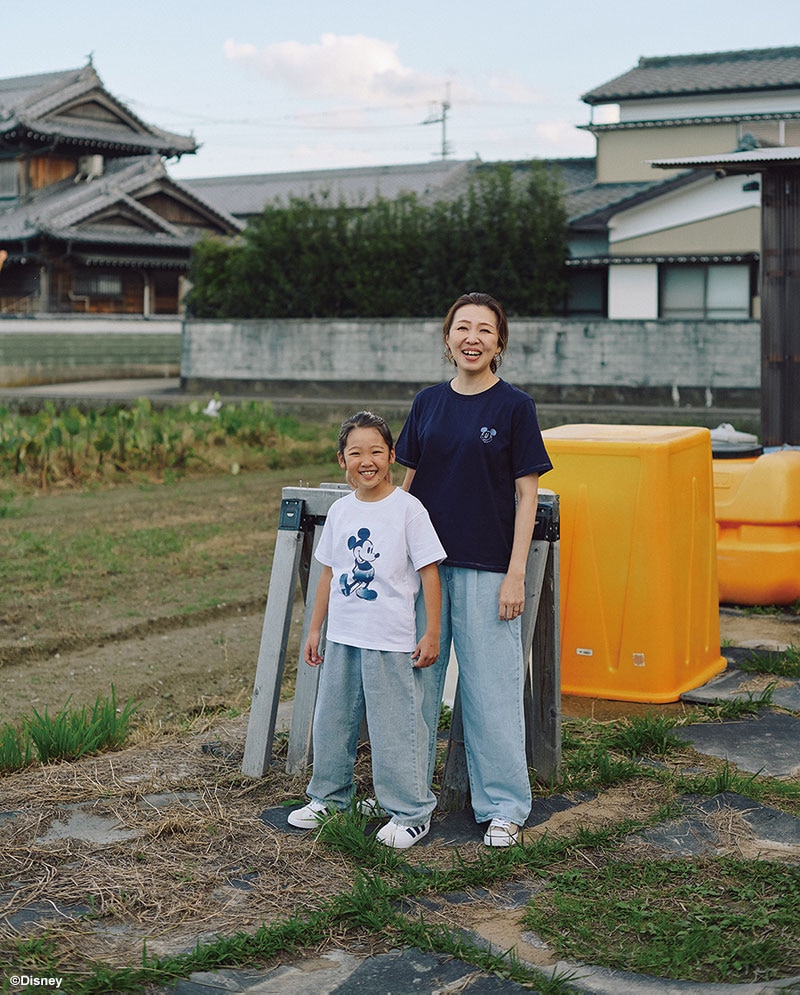
Left: A matching embroidery from the top left design. Right: A navy shirt with chest embroidery matches the design.
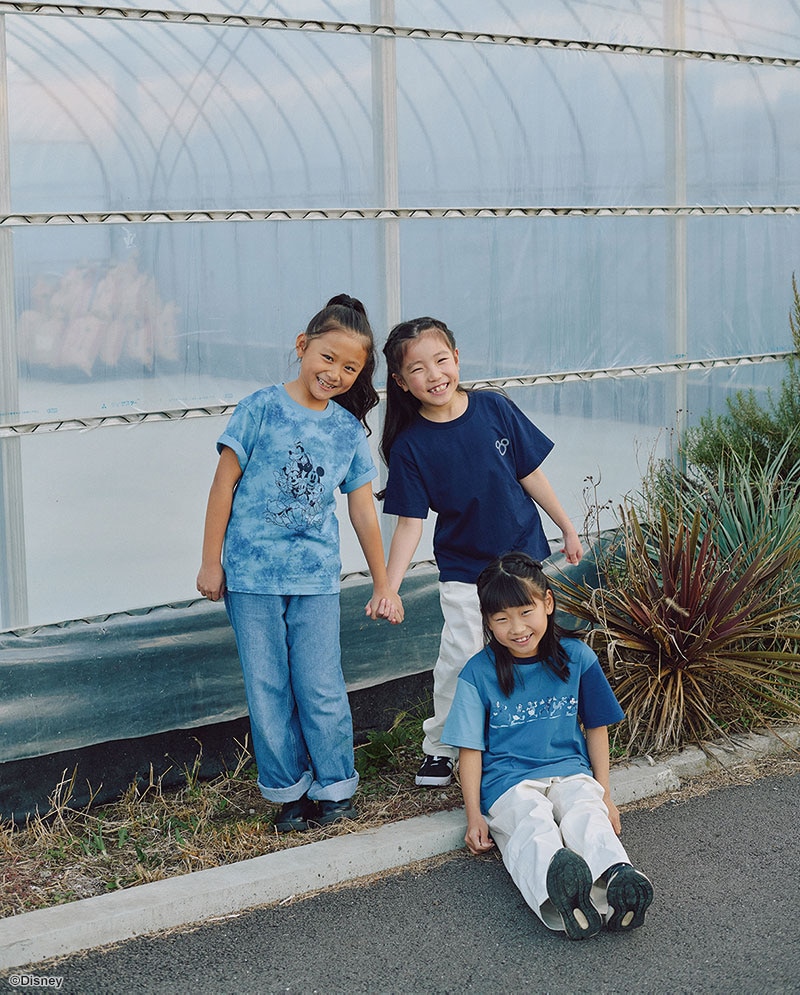
Left: A shirt entirely dyed in blue, then overlaid with shibori patterns for a striking effect. Right: A Mickey Mouse design created with discharge dyeing, featuring BUAISOU’s signature rope motif subtly placed on the chest. Center: A combination of indigo variations in the body design, paired with Mickey Mouse and friends printed in shades of blue for a cohesive look.
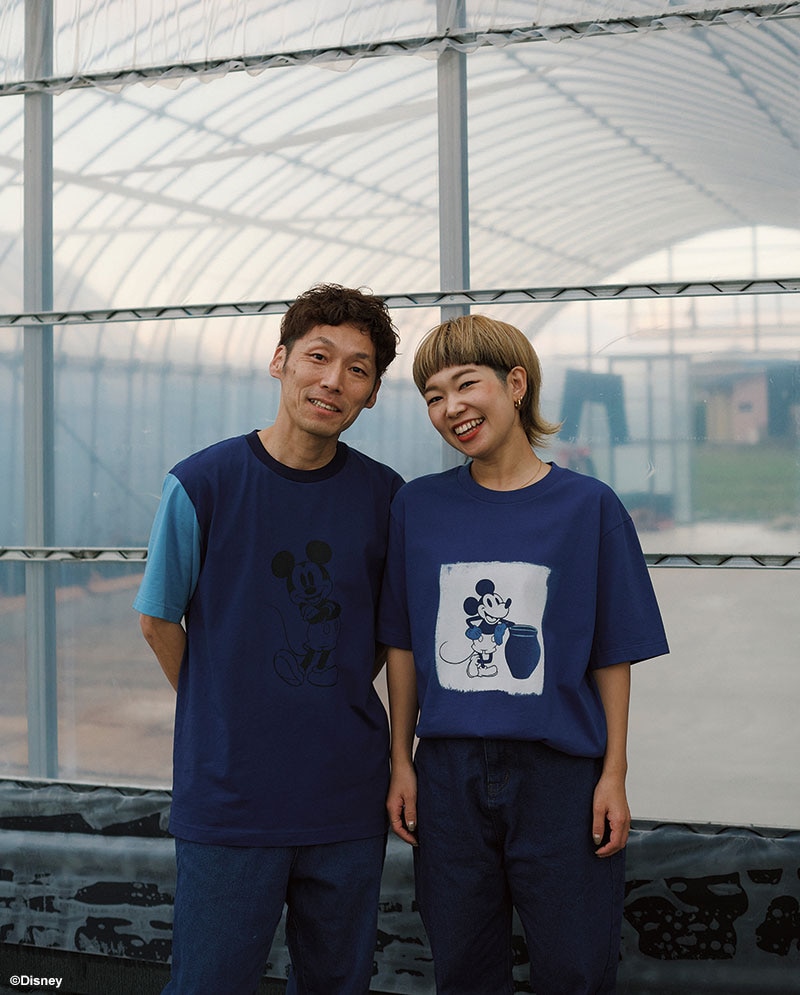
Left: Features the same design as the above. Right: Same as the above.
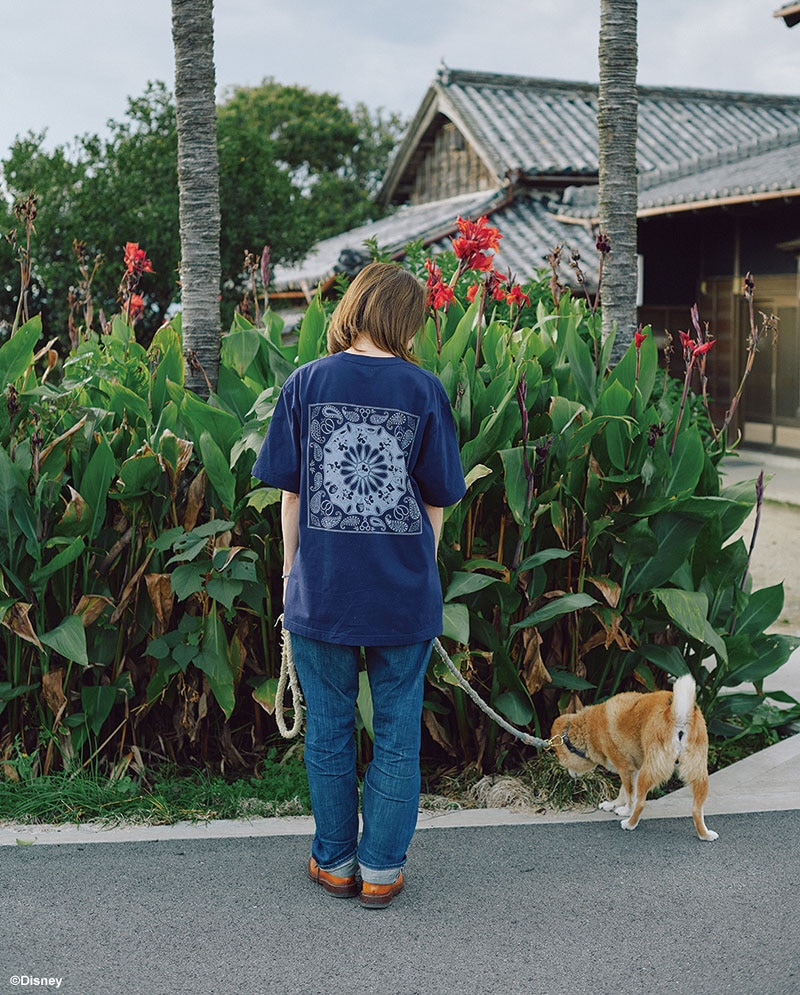
The bandana print features Mickey Mouse participating in the indigo dyeing process. By using familiar poses and props like dyeing vats, the design cleverly illustrates the journey of indigo creation.
©Disney
